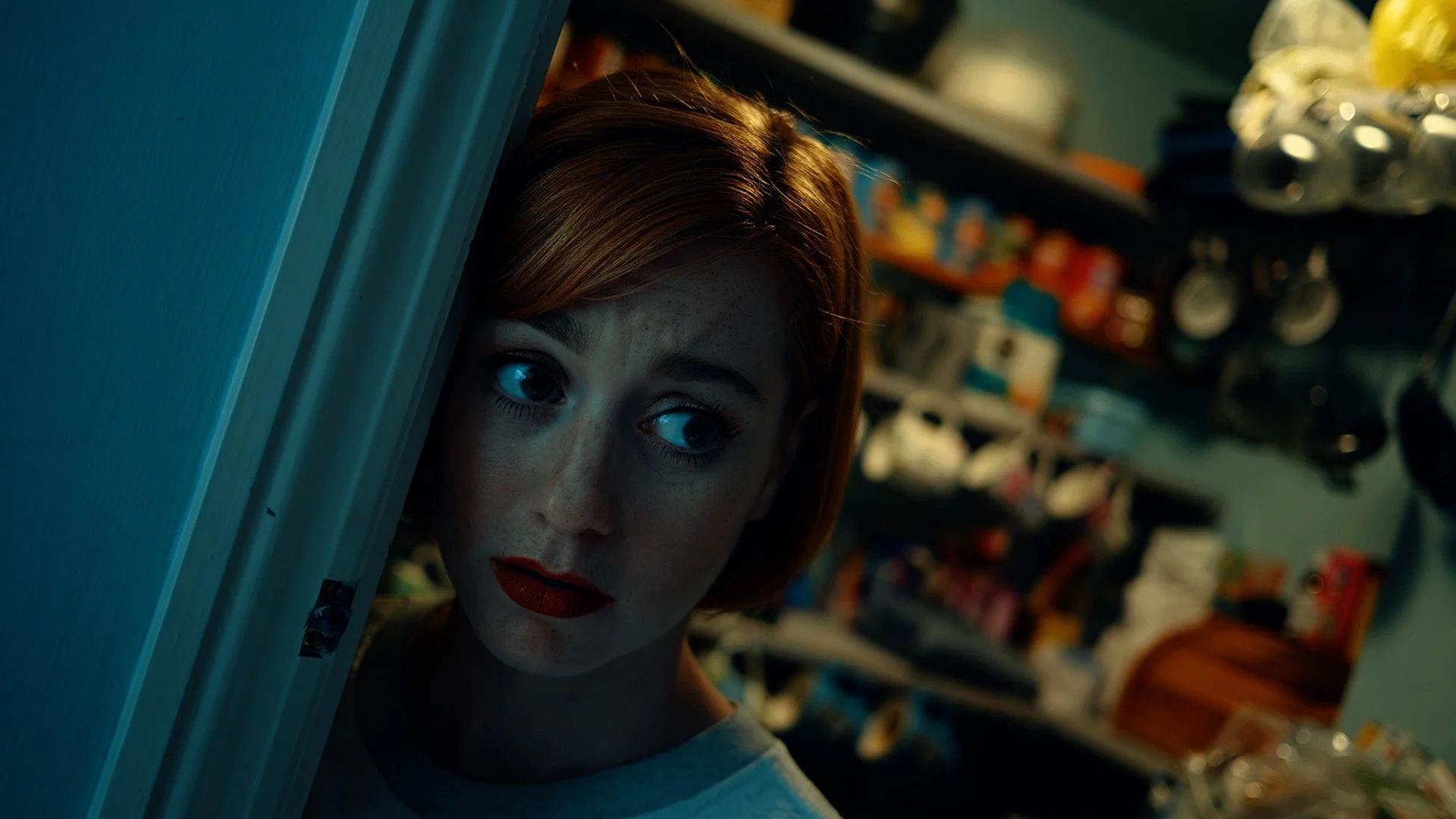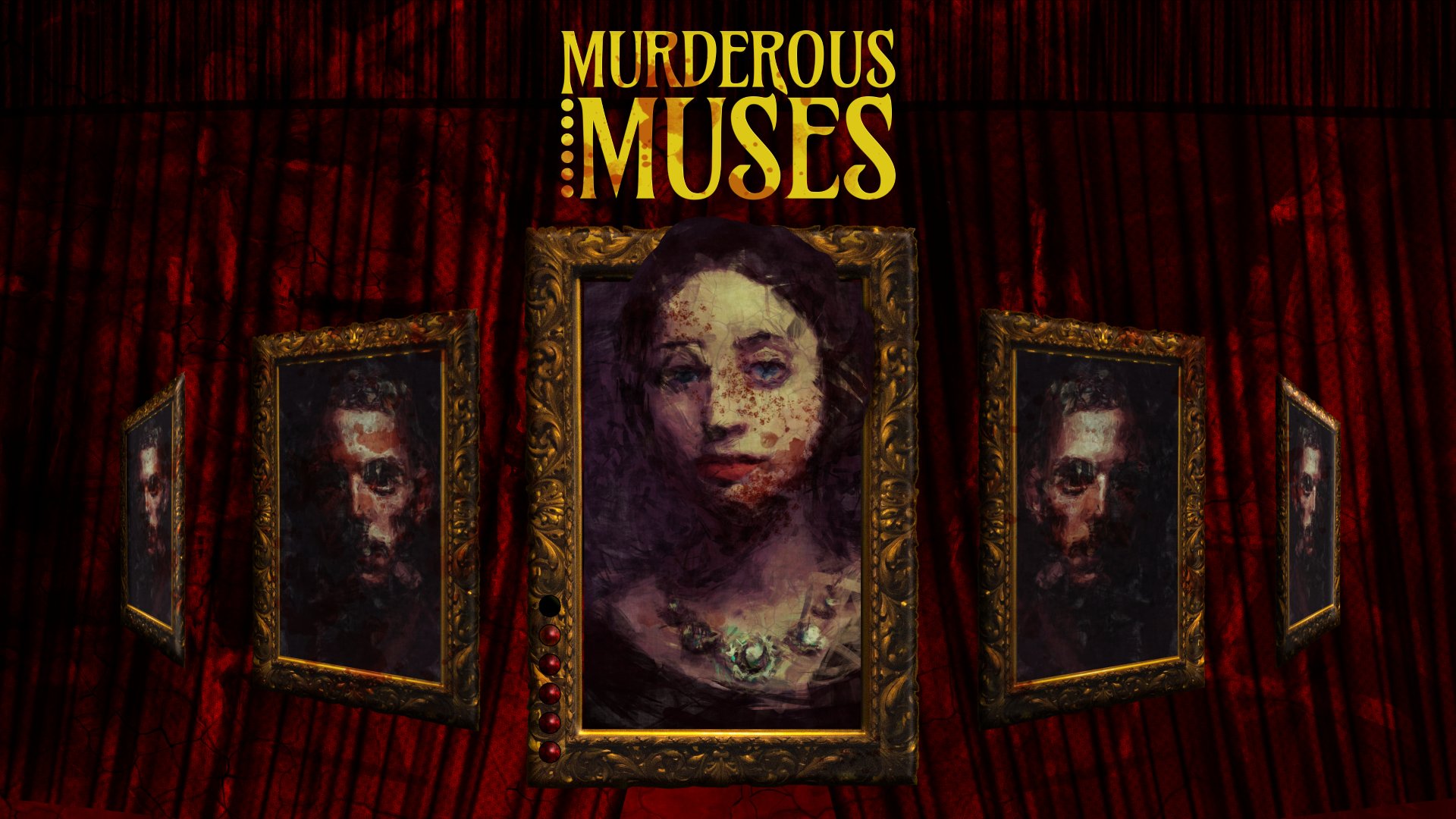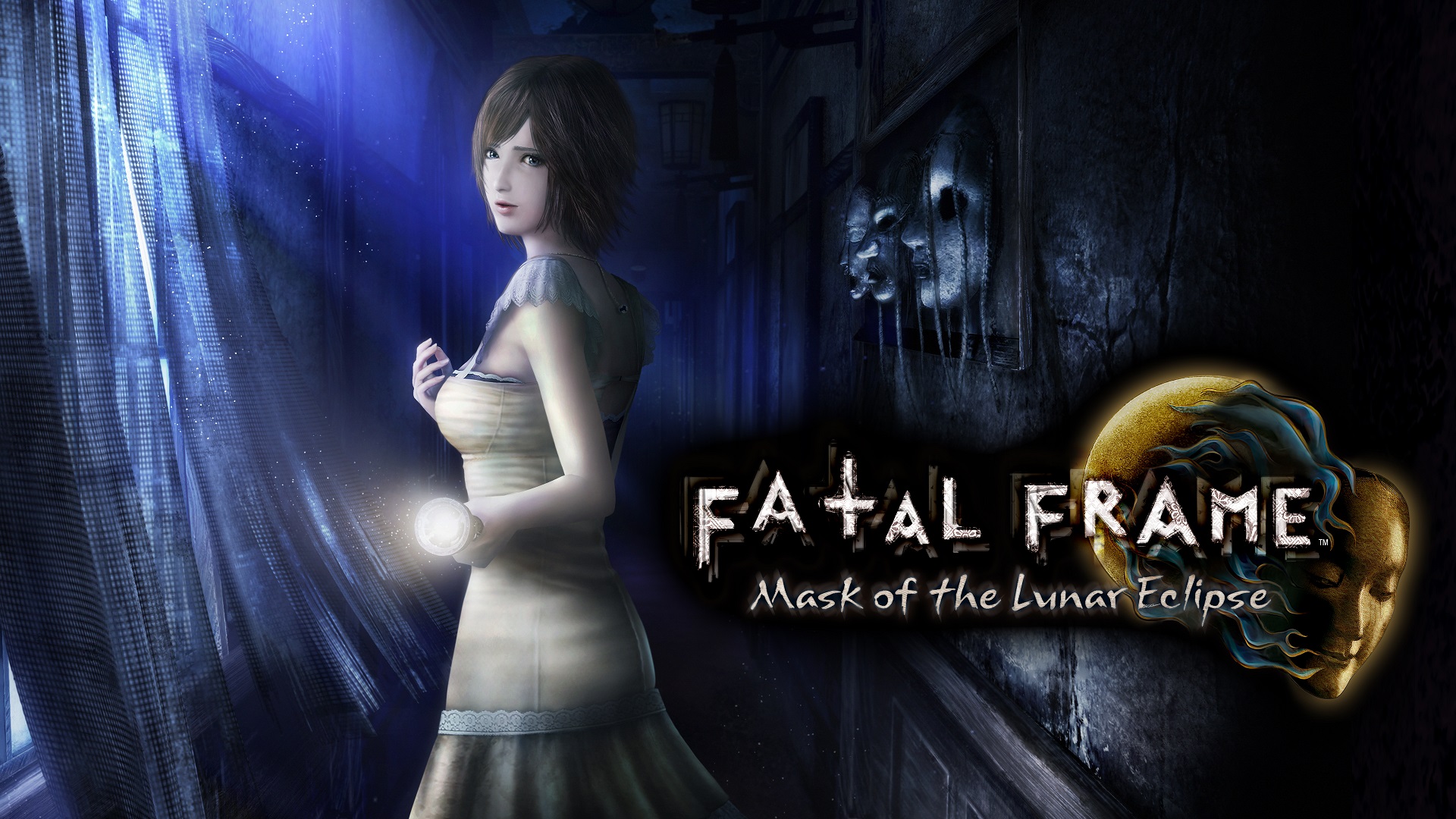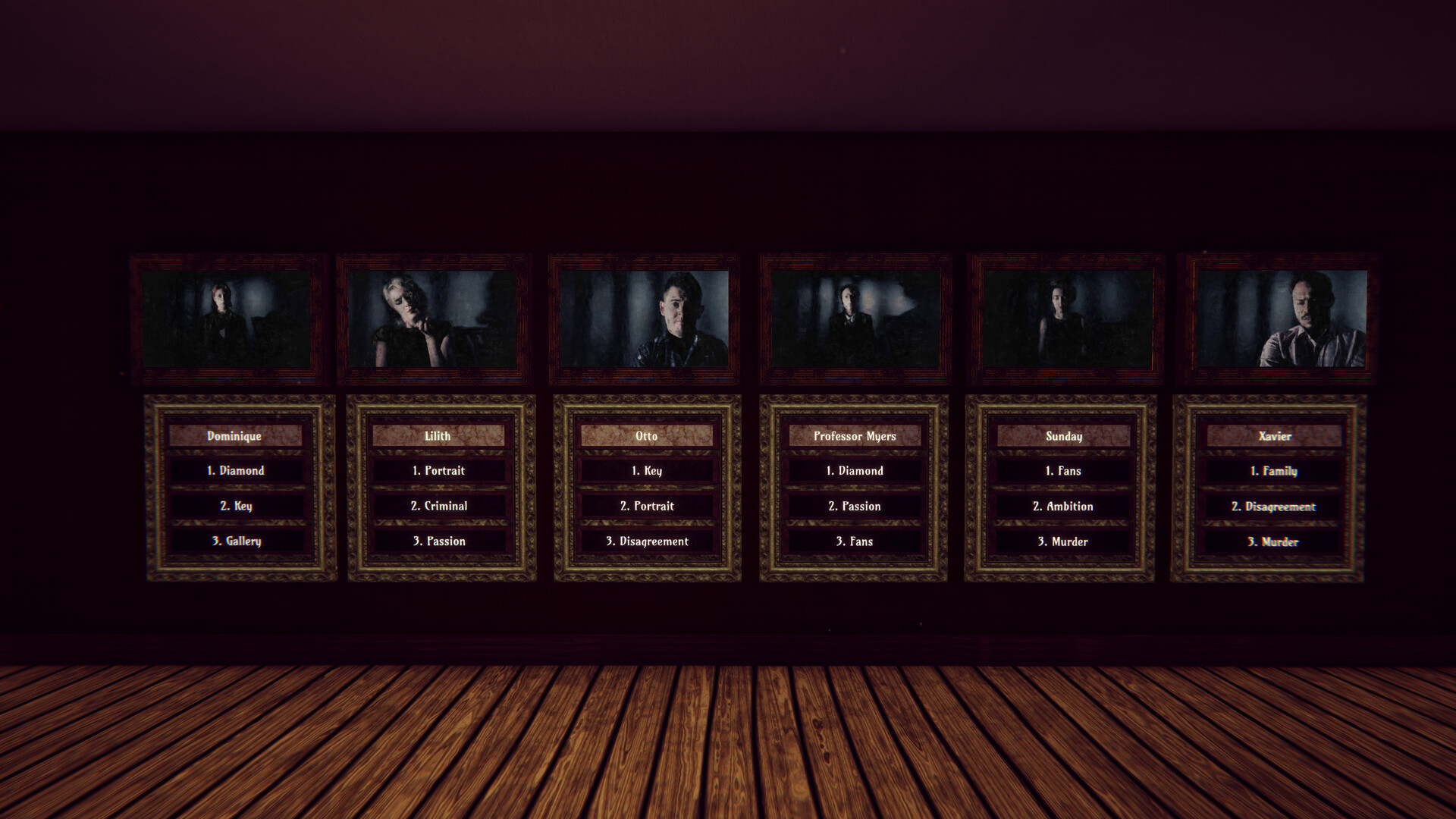
Full Motion Video: How It’s Making A Comeback
The FMV movement started in true in 1983 when arcade machines hit the market, with Astron Belt being the first noted “Major” laserdisc arcade game, while most probably credit Dragons Lair as the first FMV.
FMV stuck to laserdiscs putting out much higher video quality than other arcade games in that era, like Spy Hunter and Pole Position. The fact that these laserdisc machines were already limited with their high cost of entry, being around fifty cents when the standard was twenty-five cents, quickly led to the decrease in popularity of these machines. By the time 1987 came around, these FMV arcade cabinets had all but disappeared from arcades. Around this same time, RDI Video Systems attempted to make a home console called the Halycon, which almost immediately failed. RDI found itself going bankrupt after releasing two games. Companies like Atari and Universal canceled almost all their FMV projects by the late eighties.

After a few years, though, with rising costs of arcade plays and the cost of materials to make these FMV games go down, there was finally a sweet spot where companies like American Laser Games were able to release a light gun FMV game called Mad Dog McCree. After becoming an instant hit, we saw a resurgence of companies trying to pick up the ball again and roll with it. We saw releases like Dragons Lair 2 and Time Traveler, but again the fad almost entirely had been passed over in favor of things happening at home with PC FMVs rising and even consoles like the 3DO and CD-i. Sega CD also became a staple in the FMV community as in the early nineties, we got a lot of what is now considered classics in the genre.
Entire new franchises came and went throughout this new golden age of technology. Games like Tex Murphy released four games between 1991 and 1997. In addition, we saw the release of such controversial titles as Night Trap which in May of 1993 was pulled from shelves in the United States and is credited for creating the Video Game Classification system in Australia.

We also got a lot of great FMV games around that time, too, mostly released to some form of controversy. Harvester, released in 1994 and hailed as the most violent adventure game of all time, was banned in Germany and had a scene removed in the UK and Australia. The Scene in question was where some babies eat a mother, and she enjoys it. While the idea is still morbid, and honestly, Harvester as a whole is still incredibly upsetting, well, the ideas and tones it puts forward are. The visuals do not hold up, and the effects of the grotesque scenes come across as goofy these days.
Other controversial releases include the ever-popular Phasmagoria and its sequel, A Puzzle Of Flesh. While many cite its Rape Scene as the biggest offender to this, I would have to agree. At the height of its popularity in the late nineties, there were approximately One Hundred and Thirty FMV games. This is insane because there were basically consoles that released only FMV games, and I do have to thank Justin McElroy for giving me that knowledge ( See Halcyon and Captain Power).

Then something happened in the late nineties; FMV suddenly dropped away. While there was a smattering of releases here and there, nothing huge, and it seemed to be a genre that was slowly dying.
Then something amazing happened. In 2014/2015, FMV came back tangibly. But something was different this time. Indie developers were on the scene and really came with big hitters. We saw terrific releases like Her Story, Contradiction, Late Shift, and Simulacra. While we aren’t getting hammered with FMV releases anymore, only a couple a year, they are all vastly different, and the majority of them try to push the genre in ways we haven’t seen before. Indie developers are doing great things now, with the most important thing being that this may be a hot take, but they are making FMV fun. While there are a couple that I would consider fun, the majority fall more into the so bad it’s a good camp.

Even today, there are FMV games still coming that I can’t wait to sink my teeth into. Games like Ghost, which you can only play at night to escape some supernatural being, and even more exciting, but I may be a little biased here, Hand Of Doom. A Doom-style FPS done with FMV characters and hands for guns to use magic, of course.
All that being said, I thought it would be interesting to sit down with a few people who maybe know a little bit more about the genre than I do. To get their thoughts on the nineties craze to what indies are doing with the genre now. So I set out to learn more, and below; you’ll see I was able to sit down with Randy Nelson (PSM executive editor, Nintendo Power, and Founding Editor for IGN), Justin McElroy ( MBMBAM, Joystiq, Polygon, and The Besties) and I also got to sit down with some current developers in the scene right now who are developing some of the coolest looking FMV games right now including Torple Dook (Hand of Doom, Chips Tips) and Tim Cowels, the founder of D’Avekki Studios ( The Infectious Of Doctor Dekker, Dark Nights With Poe And Munro and Murderous Muses)
Important note: After writing this article and recording the interviews, my laptop with it all was stolen. After losing my article and one of my interviews, the great one, I had with Tim Cowels (who I need to sit down with and talk about Murderous Muses because he is a huge wealth of knowledge and genuinely one of the nicest people I’ve sat down with). So if you notice Tim’s answers no longer appearing partway through, it’s because I lost it all! And once the UK is cooled down enough temperature wise he has been gracious enough to make plans to sit down with me again! So look forward to that!

Justin W: There was like an explosion of FMVs in the 90s. Yeah. Do you remember your first FMV?
Justin M: I do 100%. It would have been at the Huntington mall, movie theaters. They had an American laser disc-developed game called Mad Dog McCree the arcade version was this big stand-up. It was like a big CRT with a pistol that you would physically draw to shoot. And I remember just being blown away. I mean, you hear people tell stories of that and like Dragon’s Lair to a certain extent which is a laser-disc game. And I actually went to the 1993 Consumer Electronics Show, which would have been in Chicago at the time. And it was when, like, 3d audio and CDI were kind of making a run at this sort of hybrid of interactive gaming, and, you know, filmmaker, cinematic art, and the blending of movie and game, it was what everybody sort of, not everybody, but a lot of people thought would be the future.
Randy: Oh, I mean, it’s a bit of a toss-up, you know, I’m, like, endlessly entertained. And made to laugh by Night Trap. You do something like Mad Dog McCree, the old, you know, Old West shooter, you’d shoot something, and it would like cut to a different scene.
Tim C: Absolutely, it was Tex Murphy. It was one of the first times I think that you kind of saw a video on your PC screen. It wasn’t really something was around even though it’s interlaced and kind of quite low resolution. So we really loved playing that game. Then we moved on straight from there to things like Police Quest, Phantasmagoria, and Gabriel Knight 2, another amazing FMV.

Justin W: is there one that you would suggest? If somebody was going out of their way to go back into the 80s and 90s FMV games? Is there one that you would recommend that they start their journey with?
Tim C: Yeah, I mean, Tex Murphy is pretty good. It’s probably one of my favorites. That’s one of the first ones we played. Probably Phantasmagoria if you like your puzzles
Justin M: Favorites relative because they’re all, I mean, almost all deeply flawed. I mean, it’s very hard to find like, a really good experience. in it. The closest I would say to like something that is close to my heart would be Wire Head. It was basically the story of a regular guy who had a radio chip implanted in his brain that would allow you, the player, to control his actions. And the government was trying to reclaim this technology from him. And you had to be the one to help him escape this increasingly wild scenario that he was in. with wire head is one where he would occasionally like, look at you, like, Are you sure or look at you like how could you? And it’s very cool. It was like, I don’t know, there’s something I can’t shake about that sense of like the character looking back at you, the player that is very, is very strange. And like, I mean, you see it in other FMV at the time, but that was just as engaging sort of like why is this guy looking at me? It’s creepy. I mean, Sewer Shark is a classic with like this dude yelling at you because you’re not doing a good enough job at playing the game. Maybe that’s my Baptist roots. The reason I enjoy someone scolding me for acting improperly, but yeah. Night Trap, Double Switch that whole like wave of those like American laser games.
Justin M: There’s one called spycraft that’s actually very good. That it’s an early one that actually genuinely succeeds in that in that era, but it takes like oh Sherlock Holmes Consulting Detective is pretty good because it’s just a puzzle game that is using FMV to like communicate the story aspects you’re not controlling the narrative bits so much a lot of them are really like that is it when you separate the filmic elements from the gameplay elements. one of the games actually saw when I was at that CES when I was a teen because there was someone undressing in a scene. And I was like watching it because I’m 13 I’m like, wow. And this dude comes over and like shoos me away. This isn’t a kid’s game. This is Grown-up entertainment.

Randy: Sure. I mean, Night Trap is a little kind of out there. It’s a little fringe. It’s a deep cut, but it’s also really well known. So it’s not necessarily the one I would say, oh, yeah, this is your starter FMV game. I mean, if any one of them really kind of stands out. And I’m sure this is not the first time you’ve heard it or seen it in your reporting. But that would have to be sewer shark. This is like it’s kind of it’s it’s not so bad, but it is good. It’s not so good. It’s kind of right in the middle. It’s like flying down the sewer. And you’re super sharp. Try not to hit the walls. But, you know, it’s a game that was the big tagline or one of the big tag lines in it was the guy shouting at you not to commit sewerside.
Torple: I’m thinking back now because whenever I was a kid, I wouldn’t have paid any special attention to FMV. Would have just been like, oh, there it is. You know, I didn’t play it when I was that age. But a game that I had played later became at that point was Jedi Knight Dark Forces two interests, or wars or whatever they call it. Return. Which is an incredible game in its own right. But the cutscenes are great. I loved seeing his real life, Kyle Katarn. It was incredible. Oh, trying to think if there’s any other ones that I remember. I didn’t play the Blue’s Clues game when I was a kid. I wish I did. I would have loved it. I didn’t. I didn’t play like Harvester; I would have had nightmares my whole life. I’m trying to. I don’t remember.

Justin W: So what drew you to FMV?
Torple: what drew me to FMV was specifically Chip’s Tips. I had an idea for a stupid game. That was the Blue’s Clues-like knockoff that was like really blatantly like yeah, it’s Blue’s Clues. We get it. It’s stupid. You know? The Hands of Doom original inspiration was, you know, the early nineties. FMV is, with their stupid, clunky mechanics and the like, a little tiny view window for the game, which is great. Just the inherent goofiness just drew me to it.
Justin W: After the nineties, there was a pretty big lull in FMVs. Basically, up until 2014, When we started seeing games like Her Story, Late Shift and Contradiction. There was even a new Tex Murphy game in 2014. And like even up until recently, we got like At Dead Of Night. And it kind of seems like all these indie developers who grew up with FMVs are running with the genre and making these games that they had always hoped FMV would be. Yeah, so do you have a modern FMV game that you would recommend?
Randy: with a lot of the indie games, they are using it, I think, in creative ways. And, you know, that’s what keeps it alive, I think, and keeping interest in it. And, unbelievably, or maybe believably, like there are some actually really great games that are based around full-motion video that are either you know, being released or will be released, or were released, just you know, in the past few years. And you mentioned my favorite of them, which is Her Story. And I think it was just such a clever use of the medium, and because you have modern computers, you don’t have to worry about anything anymore, you know, you can have the game can be huge. You can quickly switch between scenes and have everything be nonlinear, you know, all of that. And I think, you know, personally, I’m a true crime fan. So that’s actually a really compelling game.
Justin M: It’s so neat that people are starting to finally figure out the best way of like making these games actually work. I think part of it is, so like, this is something that I’ve thought a lot about recently that you’re seeking advancement of technology, and advancement of like computer graphics, like graphics are getting more sophisticated. But as the resolutions increase in video games, the time and resources you have to allocate to create those art assets also increases, right? So the higher the fidelity, the more money it costs to actually, like physically make a game. So I think that what you’re seeing is this, people realize that generating your art with video versus like, rendering is actually a cheaper way of creating the art assets for a game. So I think that that’s been a really interesting usage of the technology is like, well, it’s actually cheaper for us to film and try to build a game around that than it is to create 3d art assets at the resolutions that people expect.

Justin W: Was there a game in the genre that you looked at and said I want to make one?
Tim C : Well, I think we’d always wanted to make FMVs since we’ve been playing Tex Murphy. I mean, in Her Story, you typed questions and got search results back. And that was pretty much a screen. Contradiction had a few screens where you could put in contradictions and drag actions, but again, it was mainly kind of like a full video interface. And like I said before, we have thought that if we ever wanted to make an FMV game, we would need all of you know, all that development resource about a build a game around the videos. And I think we saw those and we thought, you know, this is good storytelling, and it’s within a budget that we could potentially look at because we’ve been making films prior to that for you. Murder mystery kind of dinner games that you’ve run at home. So we’ve been selling box games for years, D’Avekki formed in 2004. So what we did originally and still do is make murder mystery games that you invite your mates around to play. At home, they were fully scripted. And there was a period in time where we were just putting out DVD after DVD. So we’ve kind of got the tools for doing that. I was I’ve been programming for decades, as well. So we just had all the skill sets there to be able to kind of bring it together just at that time.
Justin W: you had all these FMV fans, excuse me grow up and now they’re the ones making it right so they can kind of what they had always wanted FMV to be back in the day.
Justin M: That also you also can’t discount. If you looked at the I think the biggest stumbling block that FMV had that it no longer has that you could like point to the modern Resurgence is I mean, first off, I think games like Her Story and Contradiction. FMV games that really like legitimized it as a sub-genre, I think, are huge.

Justin W: What made you decide to kind of flesh that out Hand Of Doom into its own full game?
Torple: Yeah. It’s funny. Hand Of Doom was made to like capitalize on a really specific kind of nostalgia of that early nineties kind of first person dungeon crawler game. I’d never played those games. And I was like, No, I’m making this for someone else. The full version of that game was requested a lot by people on Twitter and on itch.io and stuff messaging me for like two years since it came out. Whenever the game came out, all the steam reviews and the Twitter comments were like, all please make a full version.
Justin W: with some promising upcoming FMV games like Ghosts, where you can only play at night trying to survive like a supernatural enemy in Hand Of Doom, which is like a doom-style game, but it made complete FMV indies are continuing to like push the genre further than we’ve seen it before. Are there any upcoming ones that have kind of caught your eye
Justin M: I’ve really been enjoying Who Pressed Mute on Uncle Marcus. That’s like a new one that just recently came out. Sort of like a family quiz. Where you have to also solve the murder of your uncle or the attempted murder of your uncle while you’re playing this family quiz via zoom. It feels very of the moment. Ghosts definitely looks interesting. I’ll be really interested to see what that ends up as, but like, honestly, I don’t. I tend to keep my expectations pretty low for these sorts of things mainly because, like, you never know, there’s as much masochism as there is like a grim fascination as there is with like, actual delight when you’re into FMV.
Randy: I know that there is a lot on the horizon. I know that there’s one from the developer of Her Story and Telling Lies. I think he has an even more sort of ambitious game coming, which is interesting. But yeah, you know, he’s working on his third game, and it’s, you know, sounds really promising.

Thank you so much for all of you sitting down with me to lay down the FMV knowledge. I’m not the only one excited to see what indie devs are doing with FMV these days, and it’ll be interesting to see if we see the VR hop from FMV. While personally might look a bit too weird. It could work done right. And thank you for being patient with me as it has taken a very long time to re-write this article after it was all lost. There are some amazing games being put out by some truly talented indie developers, so please, if you know of any, let me know!
For more features, interviews, or reviews, stay locked to DreadXP and go check out everyone who was involved in this feature, it was a true pleasure, and I hope to sit down with them all again one day!
Justin McElroy: Twitter / Website
Tim Cowels: Twitter / Developer Website
Randy Nelson: Twitter
Torple Dook: Twitter / Hand Of Doom Steam Page




